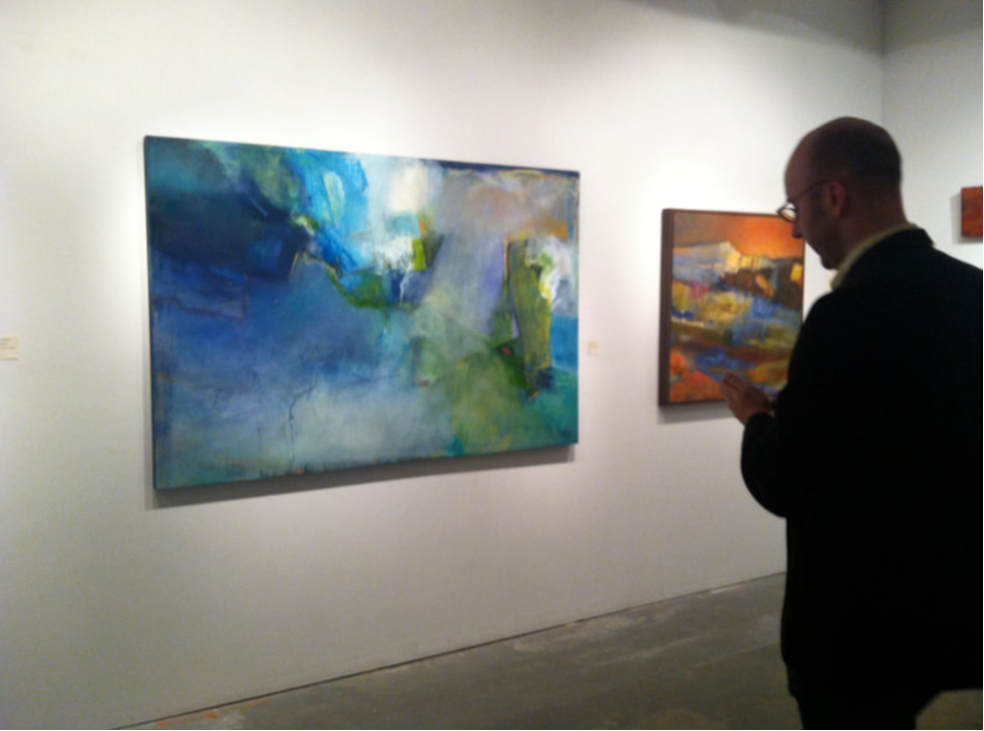|
|
I can't let go of the fact how we are all linked to landscape at an elemental level. The carbon in a leaf and in our DNA is the same as the carbon in an ancient star. As Carl Sagan said (and the musical Hair), "we are stardust". It can be felt nowhere better than when we experience the natural world. There we connect to our origins. The quality of the light and air, the smells, the shadows, textures, and color play upon us in ways we don't even realize. This idea fundamentally propels my work.
Not only does beauty in the landscape come from the likes of glorious sunsets and deep, blue waters, it can be found in the scars from conflict and contamination. That beauty carries the promise of hope—it’s a paradox I often explore in the painting process.
Many paintings begin with the compositional elements from images of ravaged places, although the viewer may never know it. I play with leaving a certain tension, but hope that the paintings are ultimately restorative. The resulting imagery reflects recall of place.
Any materials that can be applied to a surface are fair game, although paintings are mostly acrylic. Like archaeology, deconstructing by scraping, sanding, or the use of solvents leads to discoveries in the layers of paint and collage. I look to the color fields of the late work of George Inness and the muscular line of Van Gogh for inspiration, among others.
As a coal miner's daughter, one area of focus has been the coal fields of central Pennsylvania. Many paintings have originated from those images. I've also looked to melting ice caps, storm-ravaged rivers and towns, mountains stripped of their very tops, and other altered habitats for inspiration.
The steadfast magnificence of nature, despite the ruin, sits on a precipice. That thought is buried in each beginning.
Not only does beauty in the landscape come from the likes of glorious sunsets and deep, blue waters, it can be found in the scars from conflict and contamination. That beauty carries the promise of hope—it’s a paradox I often explore in the painting process.
Many paintings begin with the compositional elements from images of ravaged places, although the viewer may never know it. I play with leaving a certain tension, but hope that the paintings are ultimately restorative. The resulting imagery reflects recall of place.
Any materials that can be applied to a surface are fair game, although paintings are mostly acrylic. Like archaeology, deconstructing by scraping, sanding, or the use of solvents leads to discoveries in the layers of paint and collage. I look to the color fields of the late work of George Inness and the muscular line of Van Gogh for inspiration, among others.
As a coal miner's daughter, one area of focus has been the coal fields of central Pennsylvania. Many paintings have originated from those images. I've also looked to melting ice caps, storm-ravaged rivers and towns, mountains stripped of their very tops, and other altered habitats for inspiration.
The steadfast magnificence of nature, despite the ruin, sits on a precipice. That thought is buried in each beginning.
